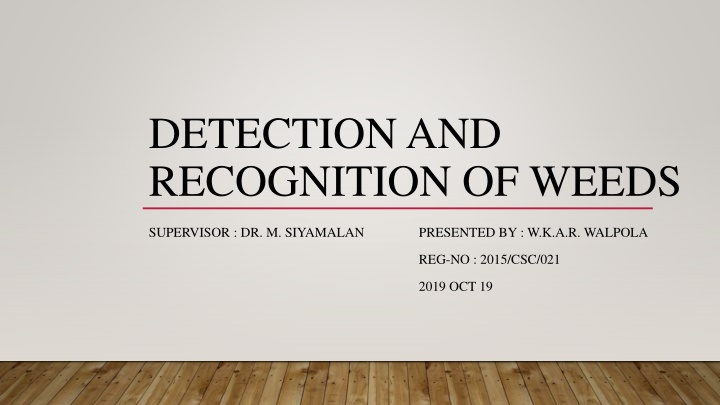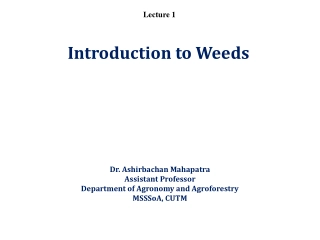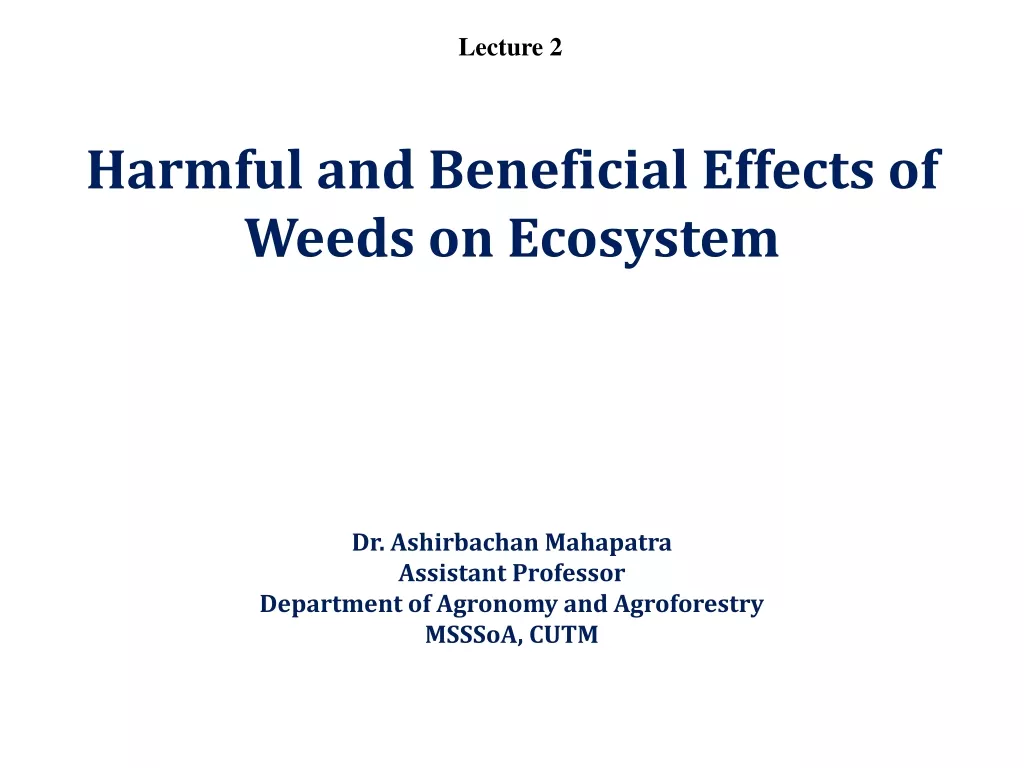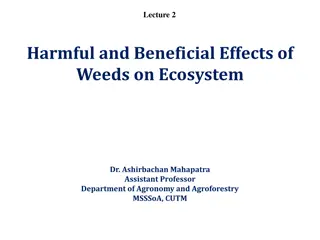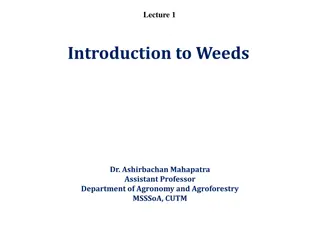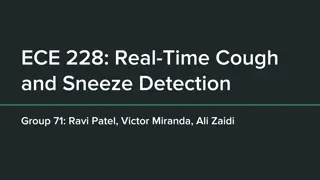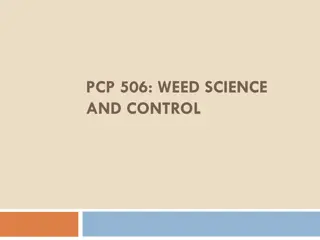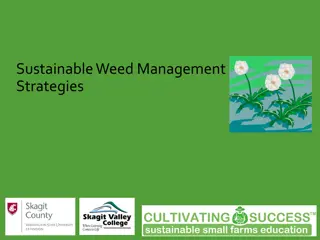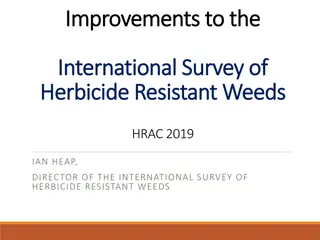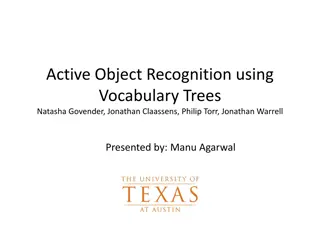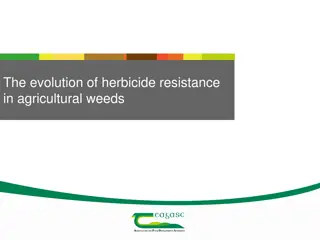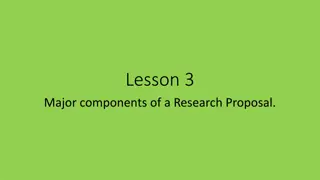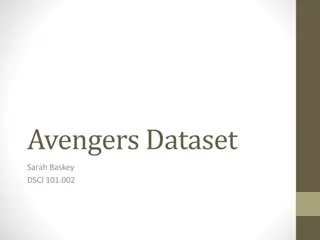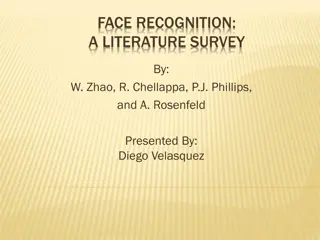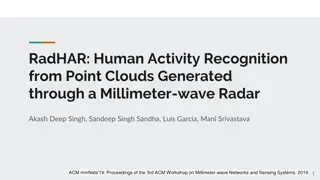Detection and Recognition of Weeds - Dataset and Methodology
Dataset and methodology for the detection and recognition of weeds using deep convolutional neural networks and OpenCV background segmentation. The project, supervised by Dr. M. Siyamalan, involves approximately 960 unique plants across 12 species at various growth stages. The need for weed recognition is highlighted, along with related works in the field. References from studies on weed growth stage estimation, seedling classification, and autonomous mapping are also included.
Download Presentation

Please find below an Image/Link to download the presentation.
The content on the website is provided AS IS for your information and personal use only. It may not be sold, licensed, or shared on other websites without obtaining consent from the author.If you encounter any issues during the download, it is possible that the publisher has removed the file from their server.
You are allowed to download the files provided on this website for personal or commercial use, subject to the condition that they are used lawfully. All files are the property of their respective owners.
The content on the website is provided AS IS for your information and personal use only. It may not be sold, licensed, or shared on other websites without obtaining consent from the author.
E N D
Presentation Transcript
DETECTION AND RECOGNITION OF WEEDS SUPERVISOR : DR. M. SIYAMALAN PRESENTED BY : W.K.A.R. WALPOLA REG-NO : 2015/CSC/021 2019 OCT 19
INTRODUCTION Dataset from Computer Vision and Biosystems Signal Processing Group, Department of Engineering Aarhus University. Approximately 960 unique plants belonging to 12 species at several growth stages. Why do we need to recognize weeds?
METHODOLOGY Deep Convolutional Neural Network. OpenCV background segmentation.
RELATED WORKS Weed Growth Stage Estimator Using Deep Convolutional Neural Networks. Deep Convolutional Neural Network for Plant Seedlings Classification. Autonomous Mapping of Grass-Clover Ratio Based on Unmanned Aerial Vehicles and Convolutional Neural Networks. Using a fully convolutional neural network for detecting locations of weeds in images from cereal fields. Seedling Discrimination with Shape Features Derived from a Distance Transform Plant Leaf Recognition Using a Convolution Neural Network
REFERENCES Nima Teimouri, Mads Dyrmann, Per Rydahl Nielsen, Solvejg Kopp Mathiassen, Gayle J. Somerville and Rasmus Nyholm J rgensen, Weed Growth Stage Estimator Using Deep Convolutional Neural Networks, 16 May 2018. Daniel Nkemelu, Daniel Omeiza, Nancy Lubalo, Deep Convolutional Neural Network for Plant Seedlings Classification. Mads Dyrmann, S ren Skovsen, Morten Stigaard Laursen, and Rasmus Nyholm J rgensen, Using a fully convolutional neural network for detecting locations of weeds in images from cereal fields, A paper from the Proceedings of the 14th International Conference on Precision Agriculture June 24 June 27, 2018.
CONT Larsen D, Skovsen S, Steen A. K, Grooters K, Eriksen J, Green O, J rgensen N. R, Autonomous Mapping of Grass-Clover Ratio Based on Unmanned Aerial Vehicles and Convolutional Neural Networks, A paper from the Proceedings of the 14th International Conference on Precision Agriculture June 24 June 27, 2018 Thomas Mosgaard Giselsson, Henrik Skov Midtiby and Rasmus Nyholm J rgensen, Seedling Discrimination with Shape Features Derived from a Distance Transform, 26 April 2013 Wang-Su Jeon and Sang-Yong Rhee, Plant Leaf Recognition Using a Convolution Neural Network, International Journal of Fuzzy Logic and Intelligent Systems Vol. 17, No. 1, March 2017.
